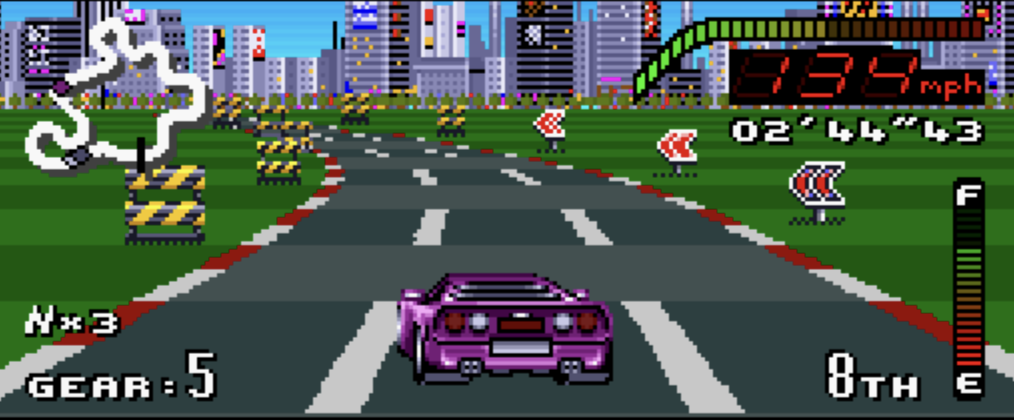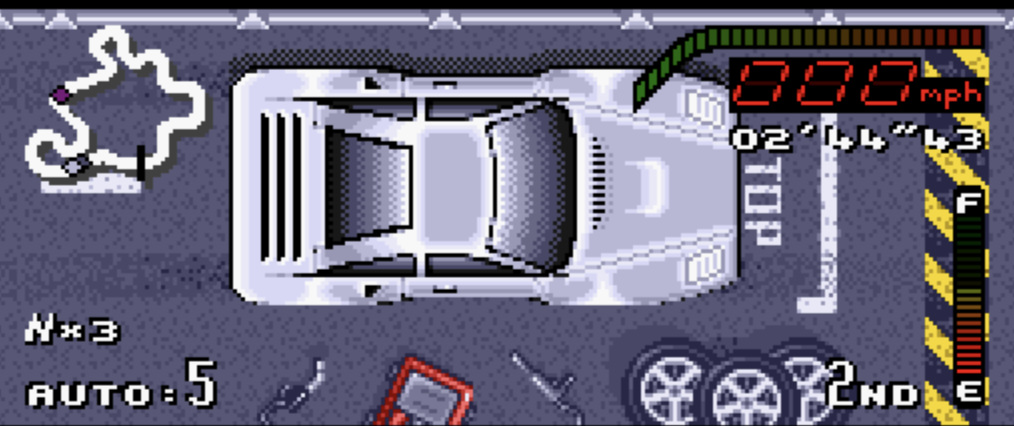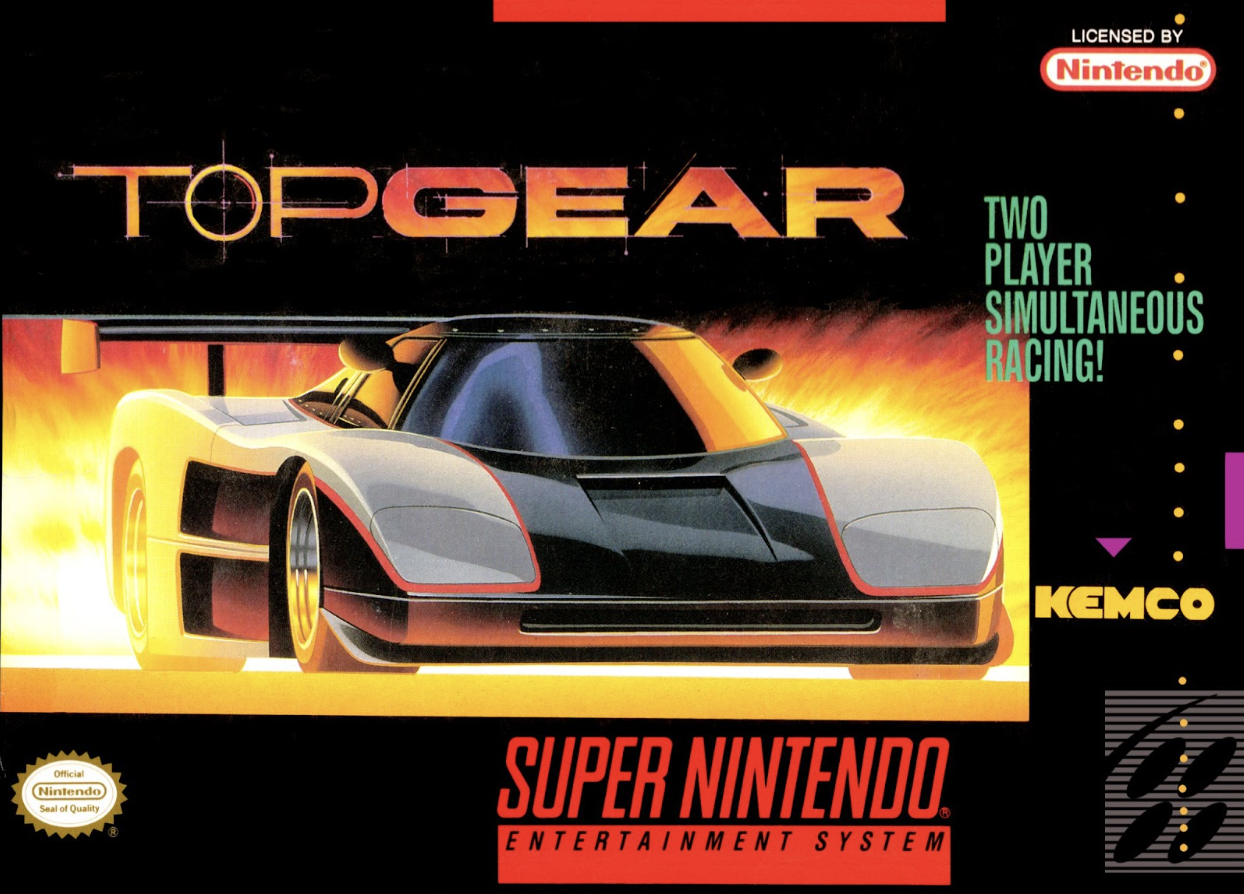Right from its Japanese launch as the Super Famicom in late 1990, the machine known as the Super Nintendo on Western shores made much of its famed seventh graphical mode. We’ve previously written about how the mode made F-Zero, a launch title in Japan and North America, able to spin the track in response to the player to simulate something like a three-dimensional racing game. With this futuristic racer, Nintendo seemed to dare other developers to get the lead out on racing games that could fully utilize this mode 7.
1992’s Top Gear (not to be confused with the BBC show/ former Matt LeBlanc vehicle of the same name) arrived on the Super Nintendo early in its life cycle, seemingly determined to snub Nintendo’s and prove that there was still plenty of gas left in the tank for racing games without fancy graphic modes – games that resembled Sega’s Outrun or Square’s Rad Racer (Highway Star in Japan).
Take one lap around Top Gear’s first track and you’ll experience a game with lineage that ties back to Sega’s arcade racer OutRun or Square’s Rad Racer (Highway Star in Japan). Top Gear Developer Gremlin Graphics published a squint-and-they-look-identical series of games referred to affectionately by fans as The Lotus Series primarily on retro computers like the Amiga, Commodore 64 and ZX Spectrum.
Like the Lotus games, Top Gear features a split screen with that player’s car on the top and an opponent’s car on the bottom. Whether that opponent was human or a rudimentary artificial intelligence had a lot to do with how many controllers you owned, and how many friends you had nearby.

In Top Gear the player races through eight different countries, each with four unique tracks. Players choose from a stable of vehicles with designations based on color rather than any particular make—though a few share a passing resemblance to real-world cars. Each car has its own max speed, tire grip, acceleration rate, and fuel consumption. That last stat is particularly important since part of the strategy for a successful race is deciding when to pit to top off so you have enough fuel to cross the finish.


Despite a presentation style that held fast to the racing games of the ‘80s and early ‘90s, Top Gear’s influence continues to the present. The game became so popular in Brazil, for example, that it directly inspired Brazilian developer Aquiris Game Studio to create Horizon Chase – World Tour. In fact, they went so far as to hire Top Gear’s composer, Barry Leitch, to compose the soundtrack for the game. And while Horizon Chase’s graphics are much more complicated and stylistic than its direct inspiration, the simple, but addicting game play of Top Gear remains intact.
